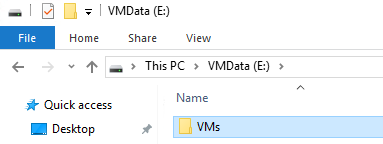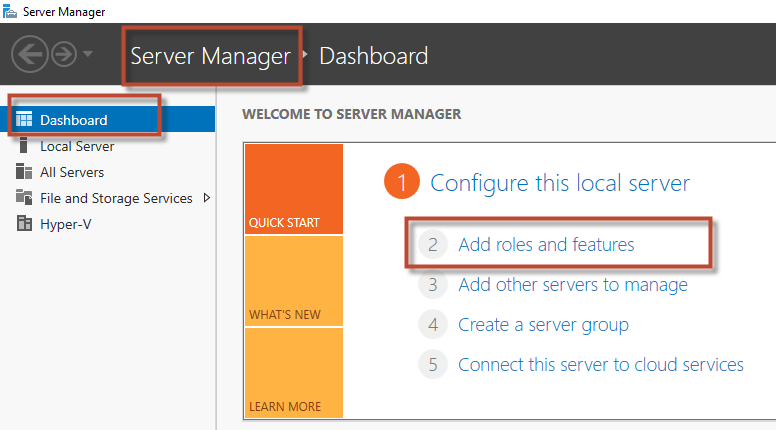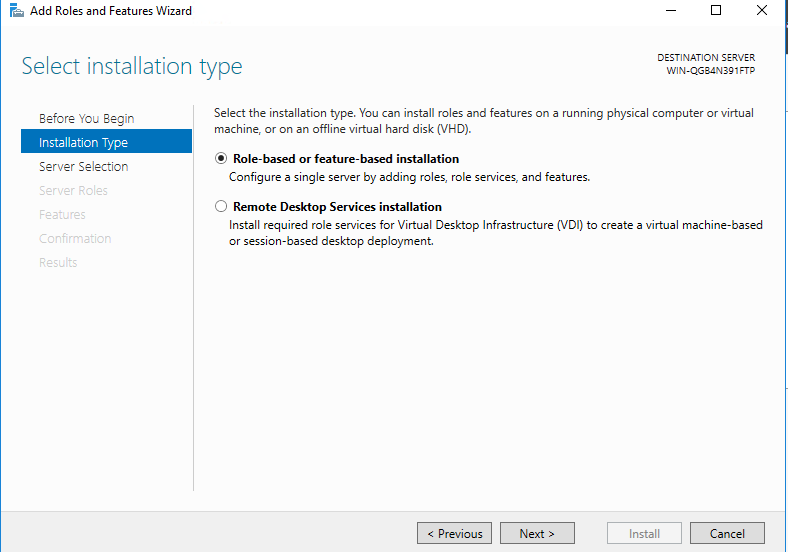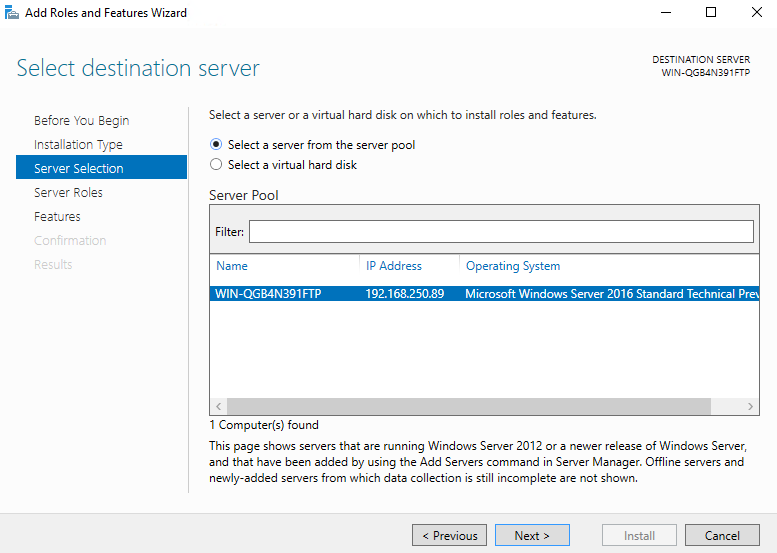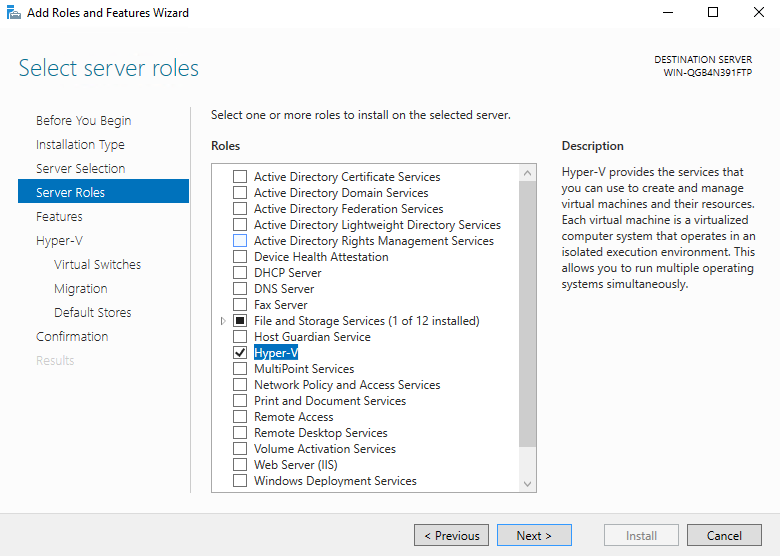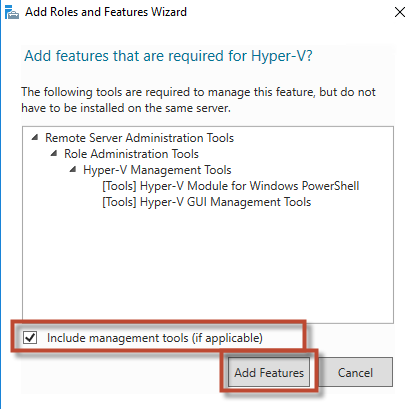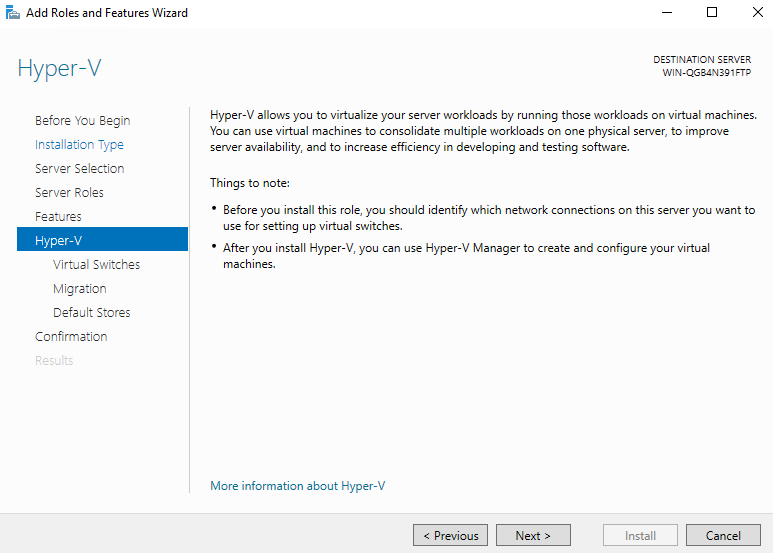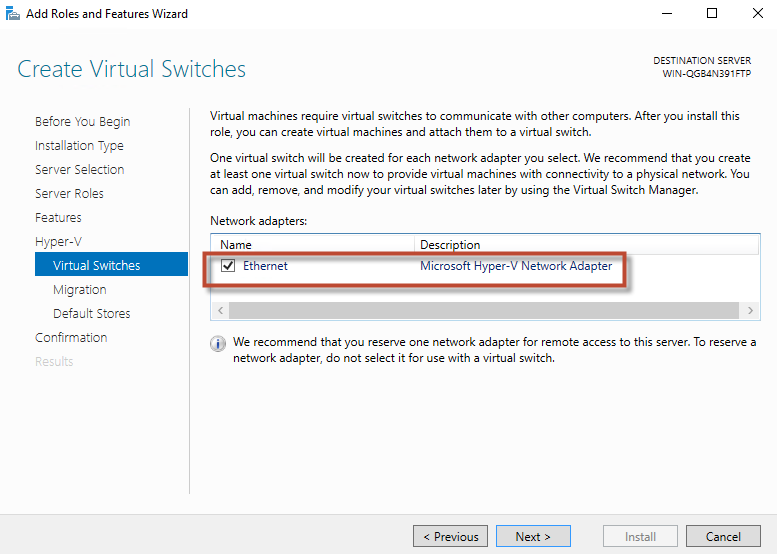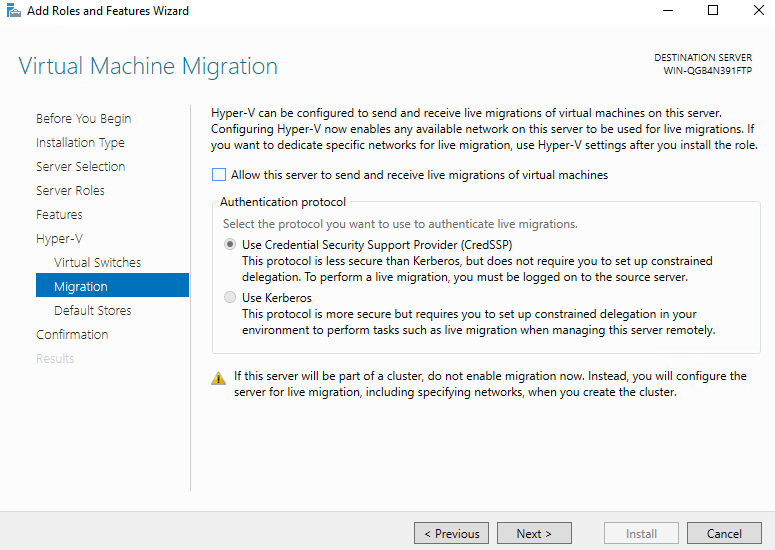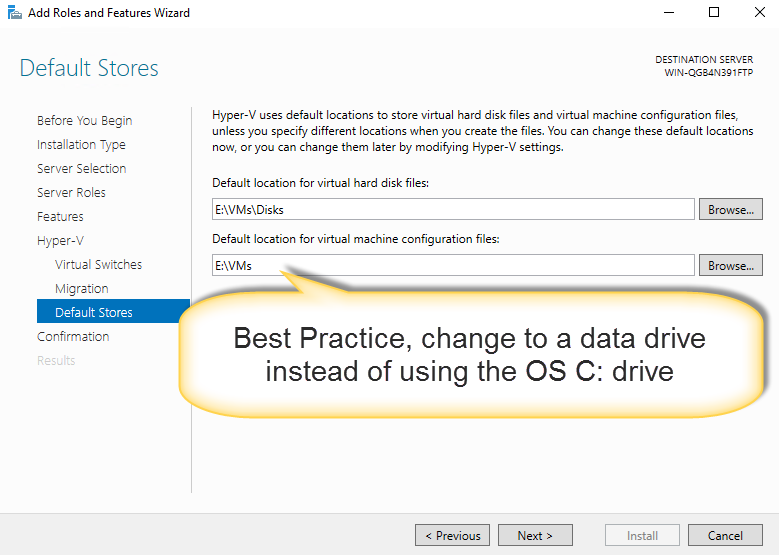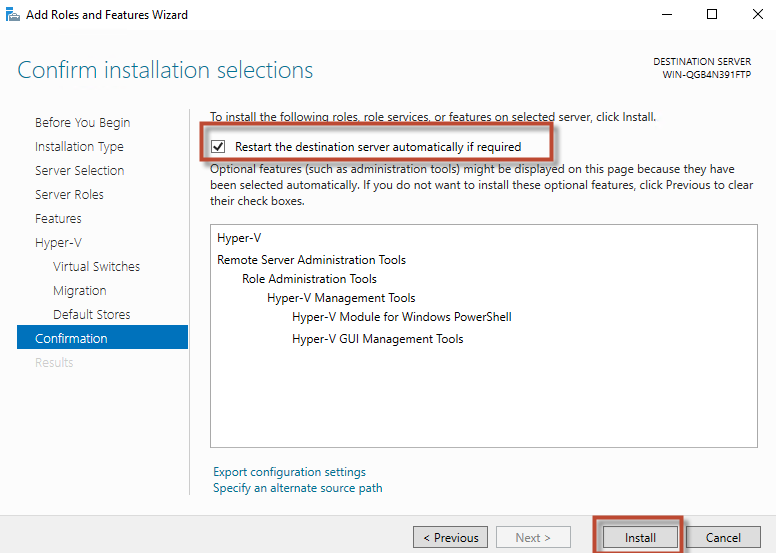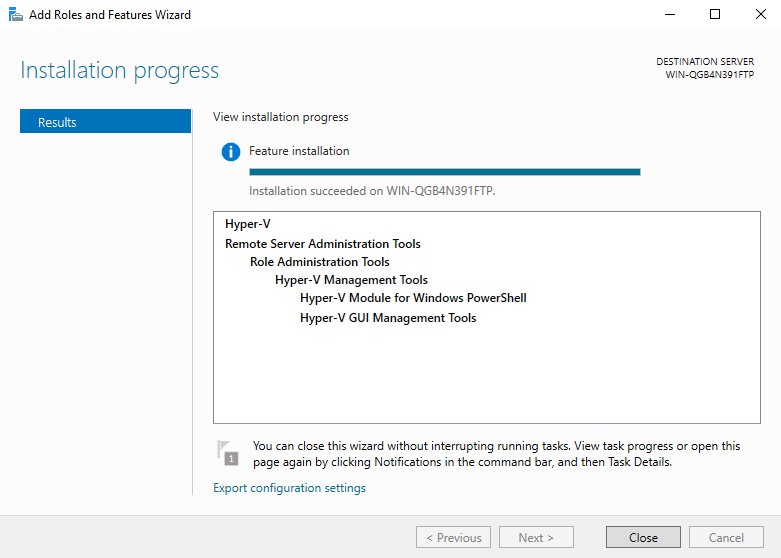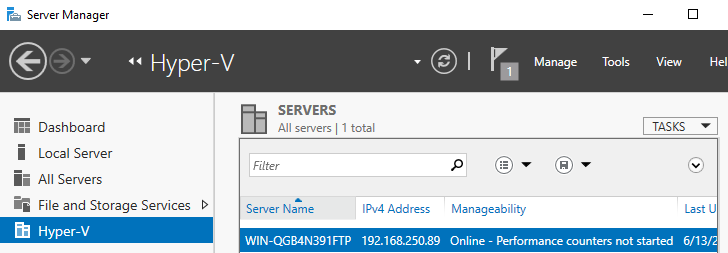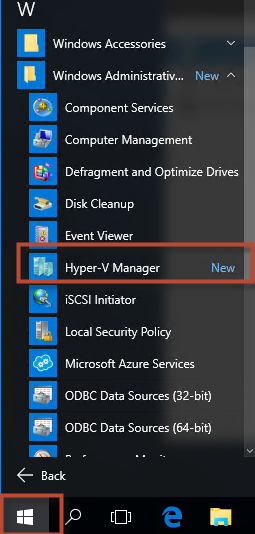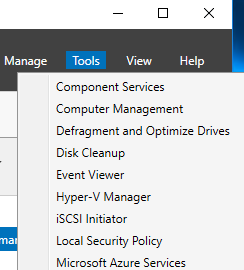In this post, we will walk through the step-by-step process for adding and configuring Hyper-V on Windows Server 2016.
Video AND Written Step-By-Step Instructions…
Video
Step-By-Step…
- Preparation-Add Data Drive, Create Default VM destination Folder
- Add Roles and Features
- Before You Begin
Just Click Next on Before You Begin page of the wizard
- Installation Type
- Server Selection
- Server Roles & Features
- Hyper-V
On the Hyper-V page, just click Next
on the Hyper-V Virtual Switches page, make sure you turn on the checkbox to create a switch. Then click Next
Just click Next on the Migration page.
on the Hyper-V Default Stores page, I recommend you change the path to something on a data drive instead of the OS drive.- Confirmation
- After Reboot…
- Hyper-V is installed
- Launch Hyper-V Manager
In the video we also cover …
To Enable Nested Virtualization…
PowerShellSet-VMProcessor -VMName “2016 Hyper-V Guest” -ExposeVirtualizationExtensions $true -Count 2
WARNING: Nested virtualization is an unsupported preview feature. Hypervisors other than the Hyper-V hypervisor ru
nning in a guest virtual machine are likely to fail. Furthermore, some Hyper-V features are incompatible with nest
ed virtualization, such as dynamic memory, checkpoints, and save/restore.
https://technet.microsoft.com/en-us/library/dn765471.aspx

